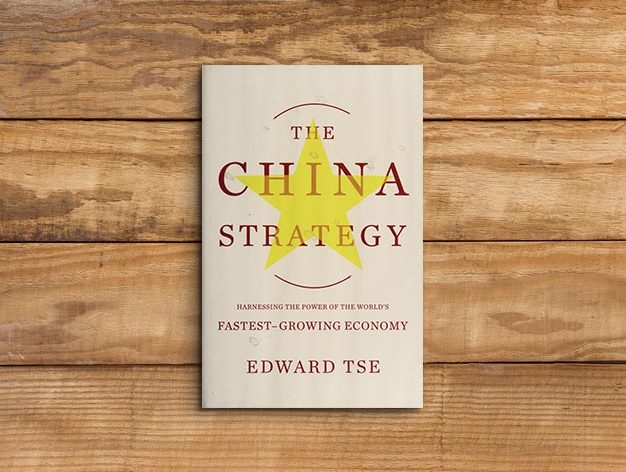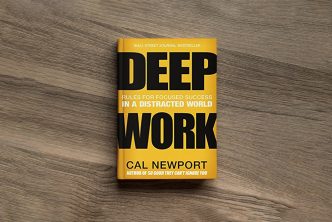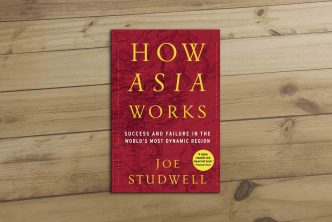REVIEW: “The China Strategy: Harnessing the Power of the World’s Fastest-Growing Economy” by Edward Tse. Basic Books. (February 2010) Length: 258 pages
Onyi Iyizoba
The China Strategy presents a comprehensive overview of China’s regulatory and business environment, detailing its unique emergence as a significant player in the world economy. It further emphasises how global and corporate leaders should interpret China’s new role, particularly global trade and business.
Published about a decade ago, the Book focuses on expounding the unique strategies of China’s economic success; and provides a broad outlook of its economy, focusing on private enterprise growth, competition, consumers, government, and their integration with the global economy.
The Book proposes that the backbone of China’s economic expansion were its indigenous businesses and entrepreneurs, who drove and sustained China’s national economic growth. As at the time of writing the Book – 2010, Edward Tse predicted a period of massive economic growth in China, fuelled by intense entrepreneurial drive, government support, and available local labour and market; which will affect in no small measure, the strategy and identity of companies around the world. This prediction has, to a reasonable extent, been actualised.
He argued that global business leaders must devise a new china strategy for the world’s fastest-growing economy in their enterprises. He describes a China strategy as a “one-world strategy: a long-range developmental plan for doing business as a global enterprise in which China is a central and integrated component, in a world where China plays a very different role than it has in the past.” He warned in the Book that Chinese companies must be perceived differently at the time – not as partners anymore but high capacity global competitors, similar to the United States of America in the 19th century.
Whether Tse’s version and proposal of the new strategy, with China as an integral and central component, is right or wrong would be subject to another discourse. However, it is undeniable that China currently plays a substantial dominant role in global business and trade today.
Government’s Role in China’s Peculiar Success
Policymakers will find his theory of how China achieved its remarkable economic success quite intriguing, and emerging country leaders will learn valuable lessons on strategy from it. Tse posits that China attained its exceptional economic power and position by two major scale and intensity forces. Scale represents the country’s population of about 1.3 billion people, and Intensity presupposes the government’s enthusiastic support for market growth.
He enunciates China’s economic success as a reflection of China’s market growth potential, the resilient nature of its entrepreneurs, and its government’s commitment, which enables it to continue to evolve. Of utmost interest to policy-leaders should be some of China’s disruptive strategies of the mid-1990s as outlined in the Book. The closure of thousands of unproductive state-owned enterprises led to massive dismissals of costly redundant state workers, which will be discussed further in the paper.
Of crucial importance is the Book’s highlight of one of the intense focus of China’s economic reforms – technological innovation. Tse underscores the importance China, in its nascent stages, placed on the acquisition of technology and expertise. The result of this core value in its reformative agenda, he argues, can be seen in everything from China’s space and nuclear power programs to its telecommunications and computing prowess.
He notes that up until now, the Chinese government persistently emphasises the need to acquire relevant skills and technological proficiency that is essential to bourgeon, as the global economy becomes more skilled and knowledge-focused.
The Book recognises the central role China has groomed itself to assume in the global business environment and argues that any business with aspirations to global competitiveness must adopt a mindset that matches the Chinese’s openness and willingness to embrace the unfamiliar. This factor is worthy of note for policy leaders in developing economic ideals and models for growing its export sector.
Drivers of China’s Economy
Tse explains that there is no single driver of China’s economy; but rather a conglomerate of the Chinese economy’s four definite features, working simultaneously to launch the country forward. These, he called the four drivers of China’s Economy.
The first driver, he expounds, is the Open China initiative that welcomes foreign companies to its markets since its economic reforms. The second driver is the Competitive China strategy, which offers China a springboard for businesses- entrepreneurial start-ups and large businesses to effectively compete in a regulated business environment. The third driver is the government and the Communist Party, which has opened up many parts of the economy but reserved ownership and control of crucial strategic state-owned enterprises in the finance, communications, energy, resources, and media sectors. The fourth driving force is striving for the One World notion, in which China and all other countries are so interdependent, that China will become indispensable in global business and trade.
Role of Leadership, Nationalism, and Patriotism
Noteworthy is the spirit of nationalism embraced by many of China’s officials, as reflected in the Book, the deep political belief and commitment within government leaders that economic liberalisation will elevate China to global leadership and respect. Tse says that many state officials ‘internalise’ this aspiration, which in turn steers their beliefs and interests away from self-aggrandisement, and towards the formation of national wealth and pride.
This Book is a predominantly business-oriented book that seeks to propose how corporate leaders should approach doing business in and with China in this era. However, a more in-depth study of the Book highlights government and policy leaders’ bullish role in situating China as economic success and a market-driven economy.
Tse recounts that in 1992, China’s leaders laid the groundwork for the most significant reforms that have created today’s success in China’s economy. The reform began with the privatisation of the country’s housing stock, commenced a revamp of the country’s financial system, and culminated in the final radical closure of many of China’s state-owned enterprises (SOEs) and the creation in its place of a private sector.
The closure of thousands of SOEs and the dismissal of about 30 million workers laid the foundations for today’s success and productivity in China. The surviving SOEs are reported to be strongly profitable-among, earning more than $200 billion in 2007.
More significantly, this policy’s impact on the private sector, as most laid-off workers ended up in private enterprises, reported an employment figure of about 24 million people, which rose to nearly 80 million a decade later.
Another crucial role of the government in this regard was China’s leaders’ decision to allow market forces to determine market development direction rather than using government intervention. They further took proactive measures in ensuring China’s entry into the World Trade Organization as they reasoned that the best way to improve Chinese companies’ performance was to expose them to the best practices and competitive challenges of foreign companies. This policy led to an influx of investments in the mid-1990s.
Policies, Regulatory Frameworks, and Approach
To promote investments in China, the government offered more tax breaks and granted more freedom to foreign companies as growth surged. This policy encouraged them to operate wholly-owned businesses instead of the joint ventures the government had first required. As foreign investments flowed into China, China became one of the world’s leading exporters.
The above details highlight significantly how the government’s policies and priorities shape and mold the business environment and, in turn, the economy of any country. The Book outlines various other policy frameworks and strategies adopted by China’s government in facilitating economic development in China. One such example is the growth of regional markets in China. The government actively encouraged creating a series of new city clusters to spread growth more evenly around the country and built relevant transport infrastructures (expressways and rail links), linking many of these new city clusters to clusters already in place.
Of important note is the approach and methodology of China’s reforms. They were radical and far-reaching, yet gentle and incremental. Tse notes that government leaders believe that a significant reason for their steady success is that they were committed to a gradual and incremental approach, even to changes that shook China’s economic, social and political framework. He explains that throughout the reform era, China’s leaders avoided any form of ‘big bang approach’ for tackling problems; but instead used a variety of measures to implement their proposals in stages over several years.
A typical example is the restructuring of China’s SOEs. Tse explains that this reordering was not a simple linear command approach from the central government to local authorities but was accomplished in stages with adjustments to its legal and regulatory frameworks. The first stage, in the 1980s, eased the transition from state-set prices to market prices, culminating with China Company Law’s passing in 1994, which enabled the SOEs transition to private ownership.
Conclusion
The Book is thought-provoking as it presents a similar strategy to realising economic success, in contrast to Western ideologies of economic growth. It is an asset to dealing with China both as an ally and a competitor for global and corporate business leaders. It demonstrates the government’s vast roles in shaping and harnessing economic development in China’s economy for policy leaders. However, as Tse opined, whether this economic success model is replicable in other emerging economies is debatable, as China possesses peculiar economic and social circumstances. The Book, nonetheless, is invaluable in outlining crucial regulatory and legal strategies adopted by policy and thought leaders in facilitating China’s terrific economic success.







